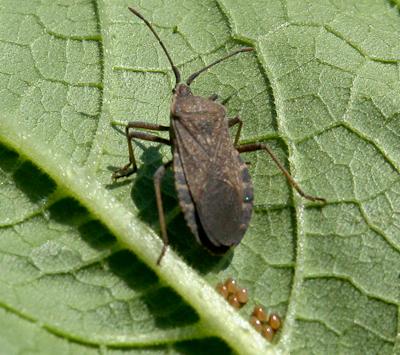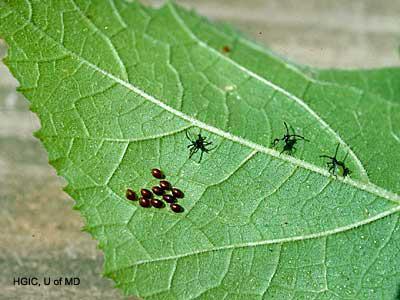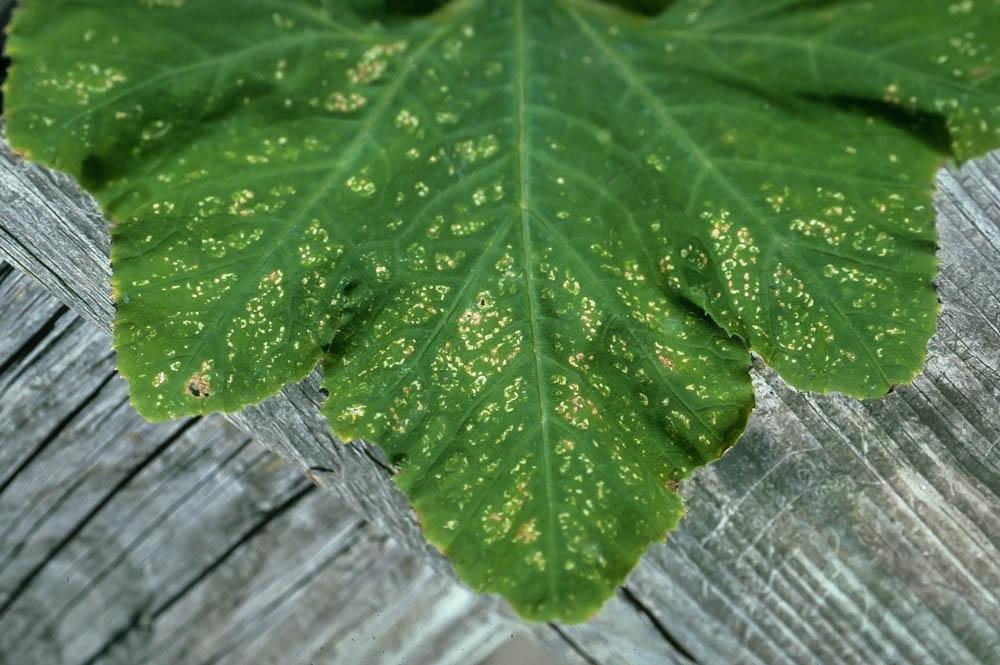
Appearance
- Eggs: Shiny, elliptical, rubbery, bronze colored; in clusters of about 20 eggs.
- Nymphs: Newly hatched nymphs are pale green with black legs, and very gregarious. Five instars (growth stages) occur over about a month. Older nymphs are shades of gray in color and also have black legs.


